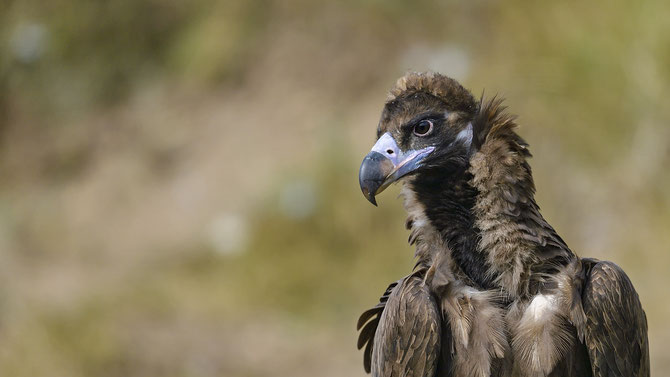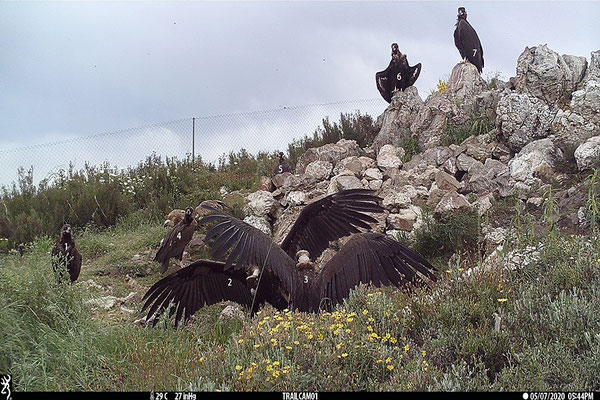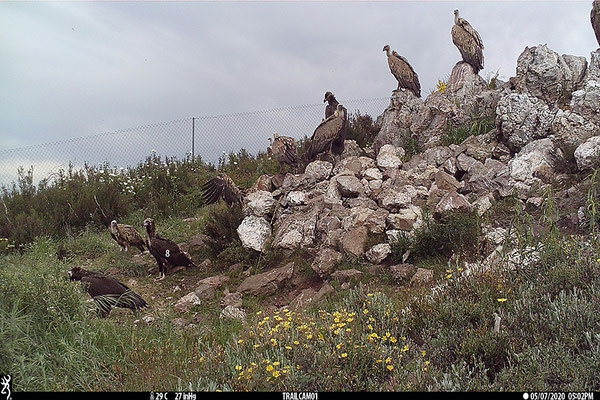
The presence of Cinereous Vultures is frequent in the feeding station in the Douro, created within the LIFE Rupis project and operated by Palombar – Associação de Conservação da Natureza e do Património Rural. Over the last few years, Palombar recorded five to seven Cinereous Vultures present at their feeding stations at a time, and now there is a new record.
Eight Cinereous Vultures at a LIFE Rupis feeding station
On May 7 2020, a camera trap at the LIFE Rupis feeding station near the village of Bruçó in the Parque Natural do Douro Internacional (PNDI) recorded at least eight Cinereous Vulture, both sub-adults and adults, where there are only two breeding pairs. It is the largest number of individuals of this threatened species so far observed in a feeding ground for necrophagous birds (CAAN) managed by Palombar in a single day. Although it is not possible to know the origin of the birds recorded, this new record represents hope that a new colony might be established in the long term within the PNDI.
Cinereous Vultures in Portugal
Cinereous Vultures became extinct as breeding species in Portugal in the 1970s, mostly due to the use of poisoned carcasses targeting unwanted predators. An increasing population in Spain saw the species regularly visiting Portugal to forage with the first pair breeding in central Portugal (Tejo Internacional) in 2010 (where now there is a small colony of about 10 pairs), and then in north-eastern Portugal (two pairs). And in 2015 the species recolonised the natural park Herdade da Contenda, and has bred there successfully ever since – there are about 5 breeding pairs there now.
LIFE Rupis

The LIFE Rupis conservation project, led by Portuguese wildlife organisation Sociedade Portuguesa para o Estudo das Aves (SPEA), and funded by the European Union’s LIFE Fund and the MAVA Foundation, is working in the cross-border Douro region of Spain and Portugal to protect and strengthen the populations of Egyptian vultures and Bonelli´s eagle. With around 135 breeding pairs, the region has one of the largest population of Egyptian vultures in Europe. Creating a network of feeding stations, improving habitat and nesting sites as well as tackling the major threats of electrocution from electricity pylons and illegal wildlife poisoning, the LIFE Rupis project will strengthen the population and improve breeding rates.






